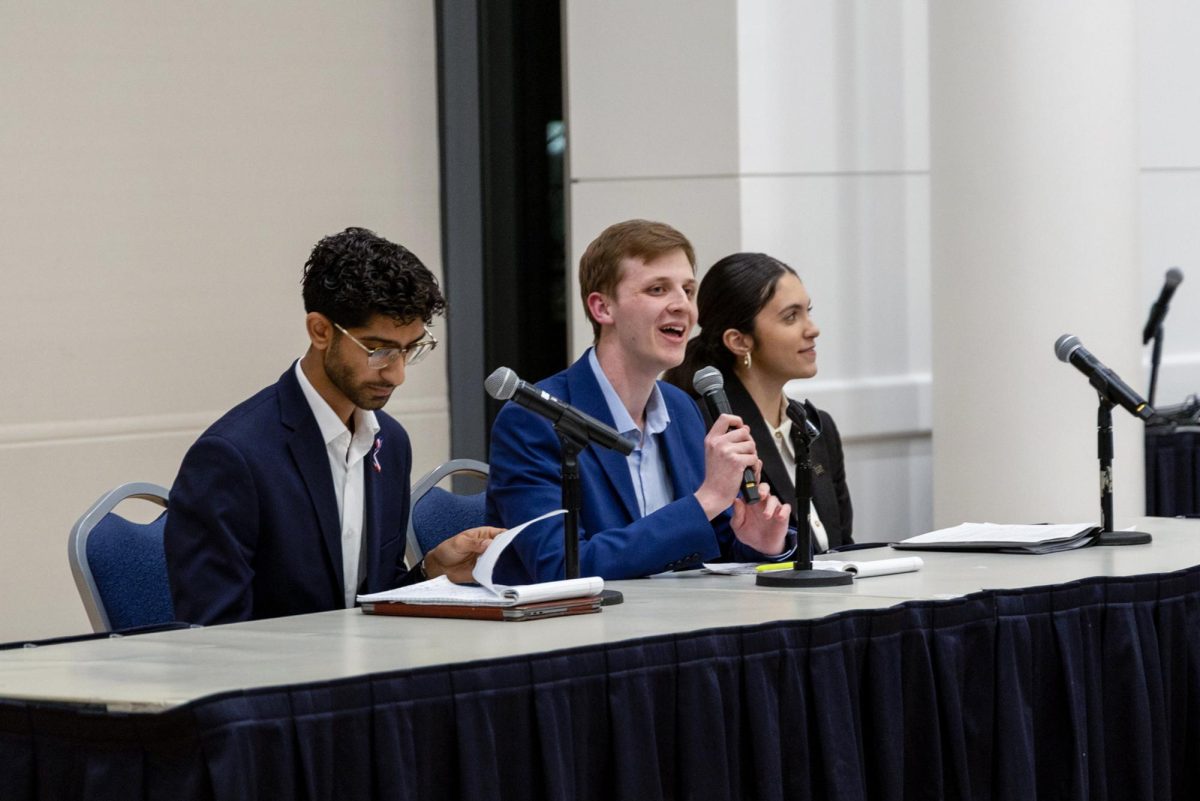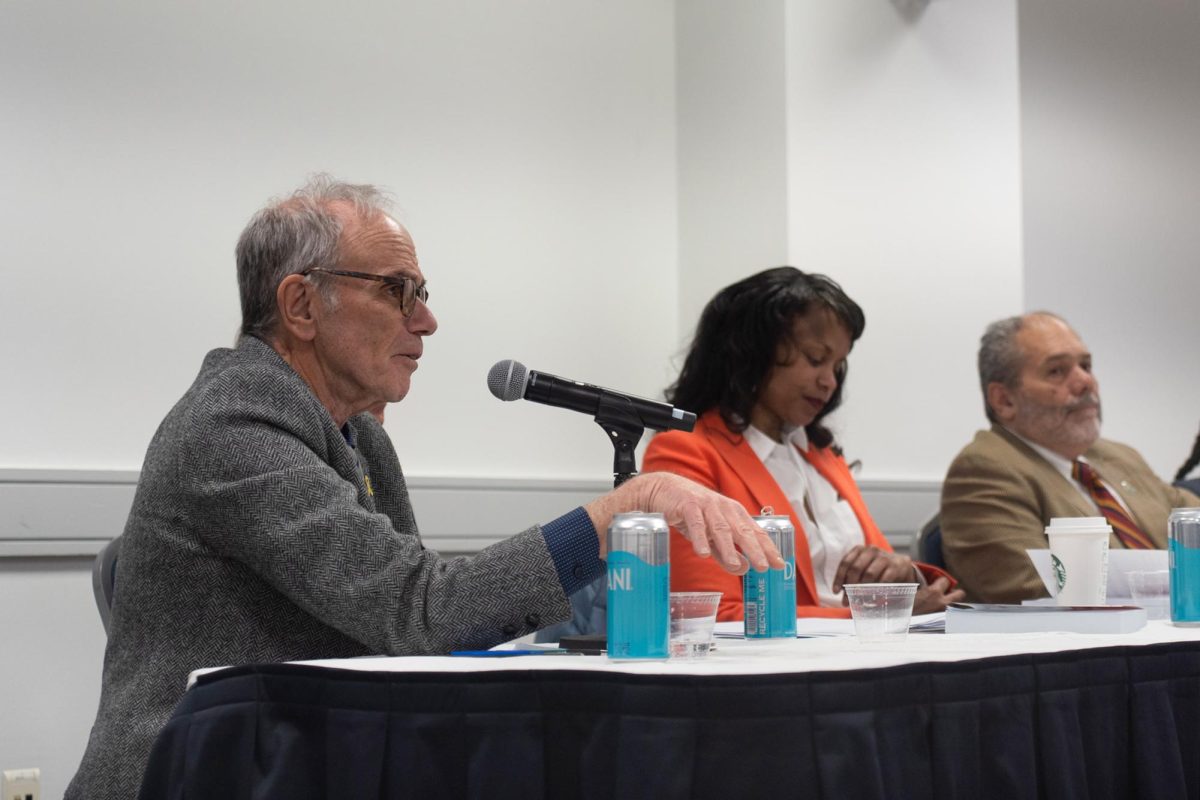Students spent Tuesday night learning about the ancient art of mendhi by decorating their hands with henna paste as part of a monthly series of “how to” programming sponsored by the South Asian Society.
The Indian name mendhi refers to the process of staining one’s palms and feet with a paste made from henna plants. Once the paste is painted onto the skin, it must sit for two to 12 hours before the dried paste can be scraped away and a red stain is left.
Mital Desai, president of the South Asian Society, said programs such as Mendhi Night help students gain insight into different cultures. The art of henna painting is centuries old with origins in Africa, India and the Middle East. Hand adornment is important in the Indian marriage ceremony, Desai said.
“Mendhi Night was an especially well-attended program because students are familiar with the art in Western culture,” said Ami Shah, program director of the South Asian Society. She said the program taught students the cultural reasons behind an art form that has become part of popular culture.
“We aimed to reach out to the entire GW community as a part of a cultural exchange,” Shah said.
She said she was impressed with the large turnout of students and said it was the best-attended program the group has hosted.
Junior Seema Patel, who helped decorate freshman Lilly Needleman’s palm, said Mendhi Night followed Diwali, the Indian New Year and Festival of Lights, which takes place at the end of October. She said the design she was painting on Needleman was “just for decoration.”
“It is a really big deal to have specific traditional patterns drawn for marriages,” Patel said.
Events featuring Indian folk dance, and programs on traditional cooking and music also were well-attended this year, Desai said.
He said he hopes students found Mendhi Night both “useful and fun.”
“The success of the series last year prompted its renewal this year,” Desai said.






